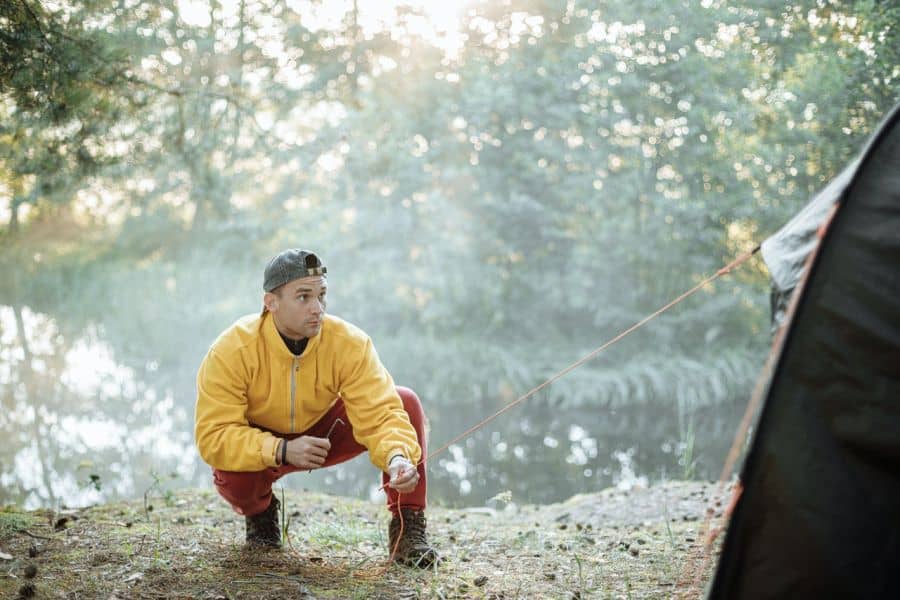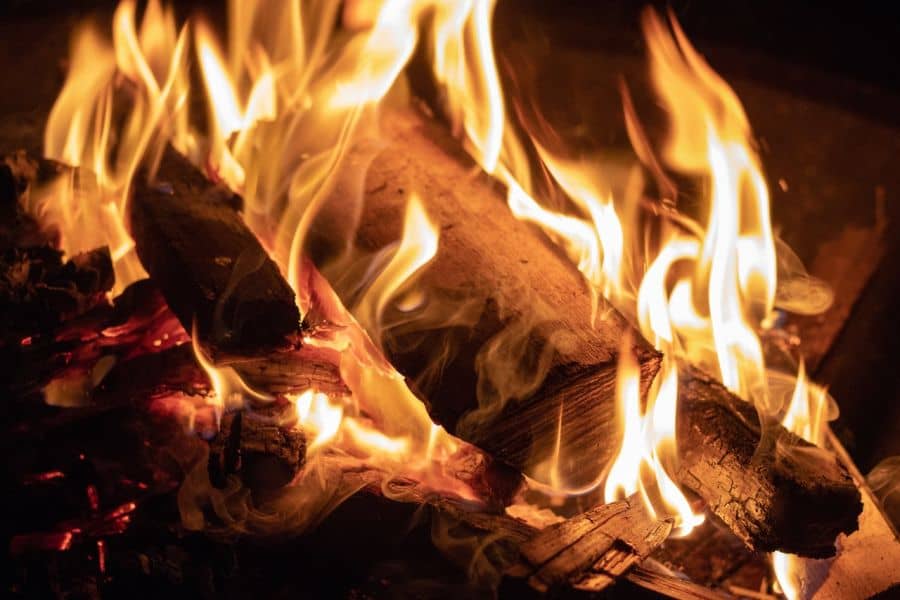However, if you are prepared for the rain, even storm can be a challenge. To be prepared means not only to have the right clothing and equipment, but also the right know-how. How to enjoy camping even when raining ?
Weather forecast
If you don´t have fixed date for camping yet, try to choose the term when the better forecast is expected. Adapt your equipment to the forecast, but be prepared for rain or storm even during sunny days. Especially in the mountains, the weather is unpredictable. When the forecast is really bad, it is better to postpone it and find a new date.
What to pack ?
- Waterproof clothing (jacket and trousers)
- Waterproof footwear and gaiters
- Thermal and quick-drying underwear/base layer
- Tarps for shelters and wet ground
- Paracord
- Extra strong tent pegs
- Waterproof cover for backpack
- Plastic bags
- Water-resistant backpack
- Waterproof bag/sack
- Waterproof matches
- Waterproof Tinder
- Survival knife
- Hatchet, axe
Plastic bags
Pack as many plastic bags as possible. If you get wet you can put your wet clothes in them to protect your dry clothing from getting wet inside your backpack. When camping, you can store in plastic bags also footwear, food, hygiene kit, firewood or medication.
Papers and leaflets
Papers and leaflets will help with starting a fire or drying your wet footwear so do not forget to pack them as well.
Right place for a tent
Choosing the suitable place for camping is one of the most important steps. With the expectation of the showers find a place for your tent which is at least slightly raised so the water won´t stay there – ideally under the trees, where you can attach tarps.
If there is no other option than built a camp in canyon or by a water, make sure to camp above the high water. This position provides dry and safe place in case of rain.

Building a shelter
A shelter, that protects you against rain can be made from tarps and paracord. You can cook, dry your clothes, taking off your shoes, sleep and relax or play games without any problems under the tarpaulin. If there is a side wind you can use the tarp as a sidewall.
Building a camp during rain
When it starts to rain before you build a tent, prepare shelter from the tarp first and then start with tent. This makes sure that you and your things stays dry when preparing the tent.
Tarp under the tent
To prevent water entering from the ground sheet of the tent, place a tarp underneath, which prevents water from entering for example in case of possible holes in the tent´s groundsheet. Be careful that the tarpaulin does not stick out from under the tent - the rain would run down under the tent. Another tarp can be put alongside to prevent walking on a wet ground.
Tent interior
Even with the tarpaulin underneath, rain can still get through. Therefore, use also plastic foil, which should be larger then ground sheet so its edges would stick up. If there is no foil, insulate it with plastic bags.
Start a fire in the rain
You should always pack reliable lighter/fire starter that helps you to start a fire even in the rain. To help with this you can use magnesium fire starter, waterproof matches or waterproof lighter. Ordinary lighter/fire starter or matches can get wet and you won´t be able to use them.
Tinder
Tinder is a material that will easily begin to glow under a shower of sparks. You can find it under the pines or other trees, where there is a high bed of needles. If you get to its bottom layer you will find dry needles that you can use to start a fire. Dry stalks good for starting a fire are also under dense grass.
Tinder can be also made of wood - find the driest possible stick or piece of wood and peel it. The wood under the bark should be dry. By using a knife, scrape the thin wood shavings that you can use to start a fire.
But you do not have to rely on tinder that can be found in the nature. Your Tinder can be prepared home and packed in your luggage or emergency box. These are special tinder sticks that burns strong and lasts long even under difficult conditions.
Kindling
Kindling is material, that can be easily ignited and lasts longer than tinder. Mostly they are small dry twigs or conifer cones. The driest material can be found under the trees, bushes and dense grass. If it is wet, put the pine cones and twigs next to the fire and let them dry a little for better burning properties.

Firewood
Firewood will ensure long-lasting fire. Use wood only from dead trees, especially because it is not good idea to use wood from living trees. If the bark is wet, peel it and let it dry. By using quality axe, chop the wood to get into the center which burns nicely.
Keep your camping gear dry
It is very important to pack your gear into the waterproof bags. Use therefore double protection – waterproof bags stored ideally in a water-resistant backpacks or backpacks with waterproof covers.
Stay dry even without shelter
If the rain gets you outside of your shelter, it is important to have the proper clothing. There is different gear/apparel for different conditions - extreme cold, heavy rain or light showers. It is good to have waterproof clothes – trousers and jackets or rain coat. The best solution can be found in breathable waterproof membrane such as Gore-Tex or eVent.
if you want to carry some extra protection, lighweight rain coat or poncho is advised. As soon as the rain comes you can put it over your clothes.
Waterproof footwear
Especially if you are planning multi-day trips, you should invest in waterproof shoes. Wet shoes can develop cold, athlete´s foot (fungal infection) and other things.
How to dry your wet gear
if you get wet you will obviously need to make everything dry again. You can of course take it with you packed in plastic bags but your backpack will be heavier as well as you won´t be able to use your stuff.
You can let your clothes and gear dry on clothesline under the tarp and setup a fire at a safe distance. If you are wearing quick drying fabrics and have no place where to hang your clothes you can possibly keep it and let it dry using body temperature.
Stay dry
When you get wet It is important to stay dry and don´t get cold. Hypothermia can be dangerous, especially when you are out in the nature. Therefore pack an appropriate clothes for your adventure.
Cotton
Cotton is not a good choice. When it gets wet, stays wet and heavy and you will be cold. If you get wet wearing cotton clothes, try to take it off as soon as possible and put something dry on.
Wool
Wool, on the other hand, is a good choice. It has water-resistant as well as good insulating properties. This means that if you get wet you stay dry until the wool dries. Disadvantages are, that it is heavy and itches on the body.
Fleece
Fleece clothing is also a good choice. It is lightweight, soft, comfortable and wicks well. . However, it is not the warmest base layer as it doesn´t hold warmth when is wet so the wind can get through easily.
Polypropylene
Polypropylene clothing has very good properties when you get wet. Polypropylene fabric is thin, lightweight, comfortable and excellently wicks moisture away, so it dries faster than cotton, wool and fleece.
Merino wool
Merino wool is an ideal solution. It transport moisture from your body to the outer layers of your clothes. When wearing clothes from Merino wool you will feel dry even when get wet – Merino wool can absorb up to the third of its weight (moisture) and yet it is still warming. It is very soft due to its fineness, comfortable to wear, does not itch, breathable, odour and stain resistant.
Did you like this article?
To the magazine